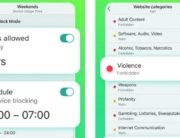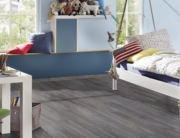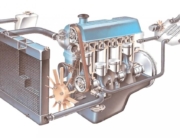Thus intending at a destigmatization of nonnormative interests that are sexual habits that don’t cause stress or impairment into the person or injury to other people. 42 when you look at the DSM-5, paraphilias are thought as “any intense and persistent intimate interest other than intimate desire for genital stimulation or preparatory fondling with phenotypically normal, physically mature, consenting individual lovers” (see Box 1 for a summary of paraphilic problems included in DSM-5). 44 even though proposed criteria for paraphilic disorders within the ICD-11 resemble those for the DSM-5, one major distinction between both of these diagnostic manuals could be the treatment of paraphilic problems diagnosed mainly based on consenting actions that aren’t in and of by themselves related to stress or impairment that is functional. This led to the ICD-11 exclusion of fetishistic, sexual masochism, and transvestic disorder, 41,45 actions that have already been reported in ASD people.
Box 1. Breakdown of paraphilic problems incorporated into present diagnostic manuals.
Exhibitionistic disorder
• Sexual arousal through exposing an individual’s genitals or intimate organs up to a person that is nonconsenting.
Fetishistic disorder*
• Sexual arousal through play with nonliving items.
Frotteuristic condition
• Sexual arousal through rubbing a person’s intimate organs against a nonconsenting individual.
Intimate masochism disorder*
• Sexual arousal by being bound, beaten, or elsewhere designed to suffer real discomfort or humiliation.
Sexual sadism disorder
• intimate arousal by inflicting mental or real suffering or discomfort for a partner that is sexual.
Transvestic disorder*
• Sexual arousal through dressing and acting in a mode or way typically linked to the sex that is opposite.
Voyeuristic condition
• intimate arousal from watching other people when they’re nude or involved with sexual intercourse.
Pedophilic condition
• main or exclusive attraction that is sexual prepubescent kids.
*Reflecting conditions that depend on consenting actions and often don’t include nonconsenting others and so are maybe perhaps not in as well as by themselves connected with stress or impairment that is functional. The performing Group regarding the category of intimate problems and Health that is sexual has eliminating these conditions through the ICD-11.
Up to now, just not many research reports have examined hypersexual or paraphilic actions in people who have ASD, & most of these are situation reports reporting about ASD people showing exorbitant masturbation, 46-50 exhibitionistic habits, 51 pedophilic fantasies or actions, 52,53 fetishistic dreams or actions, 54,55 sadomasochism, 50 or other types of paraphilias. 56 but, to your knowledge, all studies that are previous hypersexual and paraphilic habits are carried out in men as well as in many cases with cognitively weakened ASD people.
After having evaluated the literary works, we aimed to research hypersexual habits along with paraphilic dreams and actions in a big test of https://www.camsloveaholics.com/female/redhead male and female ASD patients compared to HCs matched according to gender, age, and level that is educational.
Practices
Individuals
To obtain information that is direct people with ASD also to learn an ideally homogeneous test, we only included adult people with ASD without intellectual impairments. The explanation to incorporate just those with high-functioning autism or Asperger syndrome would be to reduce steadily the effect that is potentially confounding of impairment and therefore manage to straight learn the effect of ASD on sex. All patients were diagnosed by an experienced psychiatrist or psychologist (n=90, Asperger syndrome; n = 6, atypical autism); the mean age at which patients received their ASD diagnosis was 35.7 years (standard deviation SD=9.1 years; range=17 to 55 years) on the basis of selfreport. The ASD client group (mean score M=26.7; SD=4.9) had considerably higher ratings than HCs (M=6.4; SD=3.3) from the German form of the Autism Spectrum Quotient Short Form (AQ-SF; P 57 All ASD clients and none for the HCs scored over the proposed cut-off value of 17 points. 57 individuals in both combined teams had been matched for sex, age. And many years of training ( dining Table II).
The ethical review board regarding the Hamburg health Council approved the research protocol. For recruitment of people identified as having ASD, self-help teams throughout Germany had been contacted and expected to distribute the scholarly research pamphlet among all of their individuals. Further individuals were recruited through the autism outpatient center during the University clinic Hamburg-Eppendorf, Germany. HCs were recruited through advertisements in the University infirmary Hamburg-Eppendorf as well as the University clinic Mainz in Germany, at regional departmental stores, and through individual connections associated with detectives.






